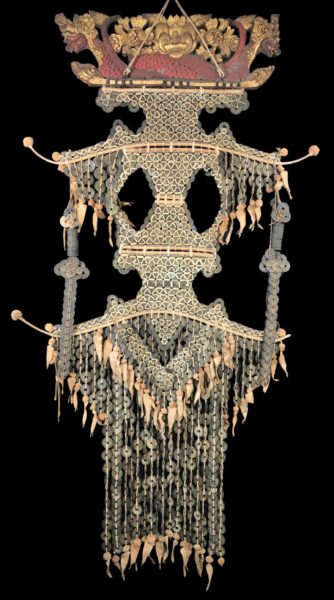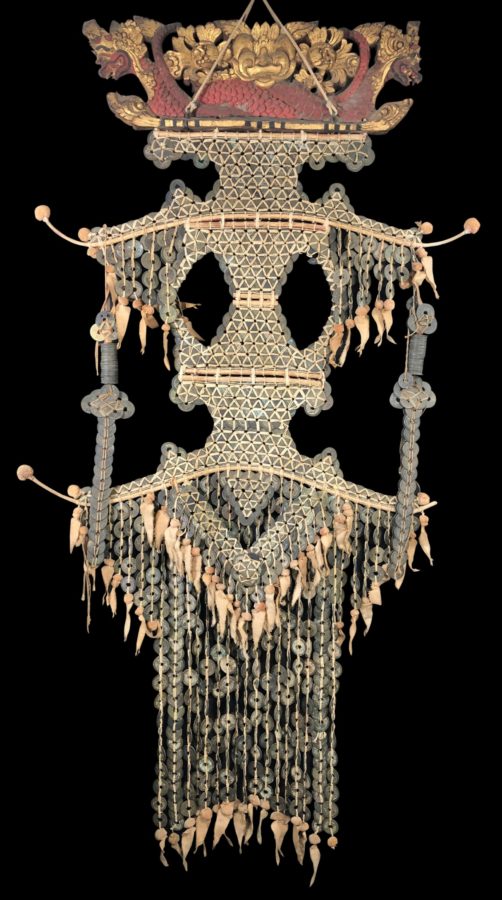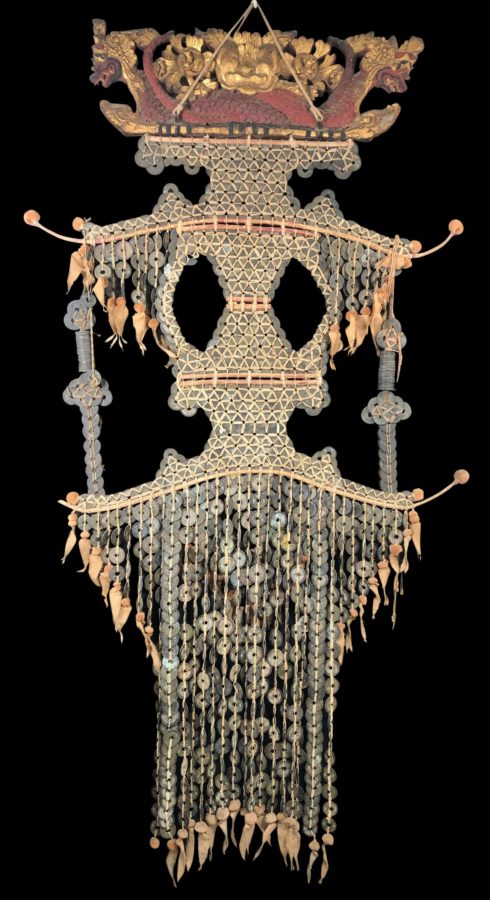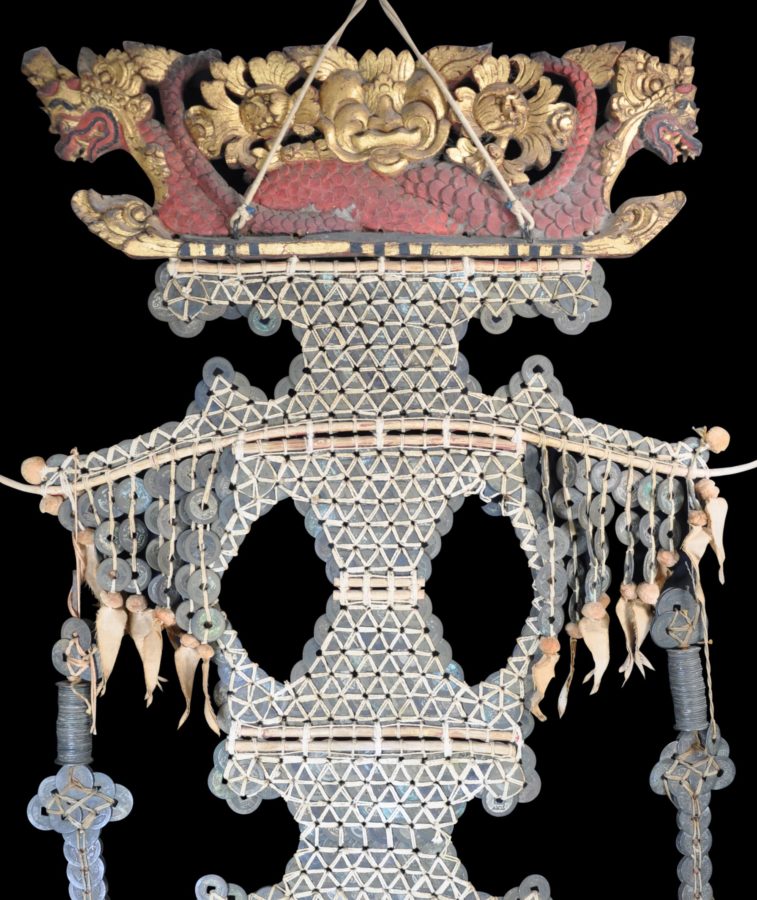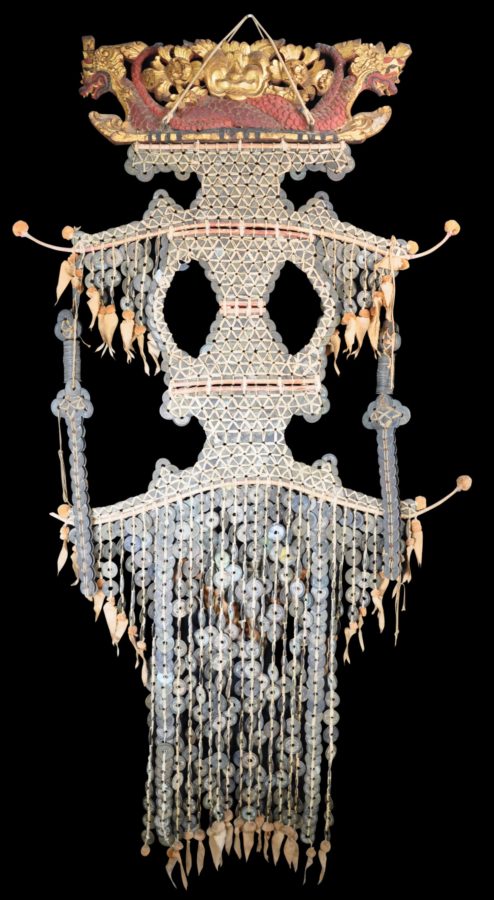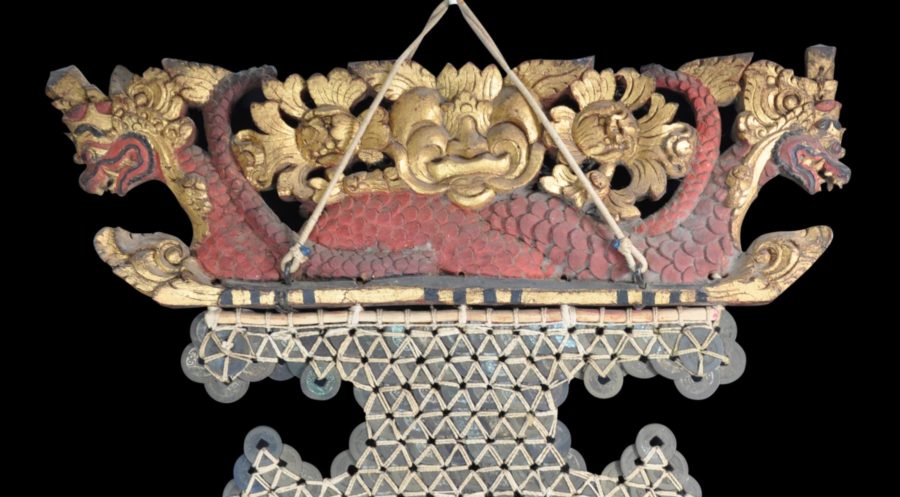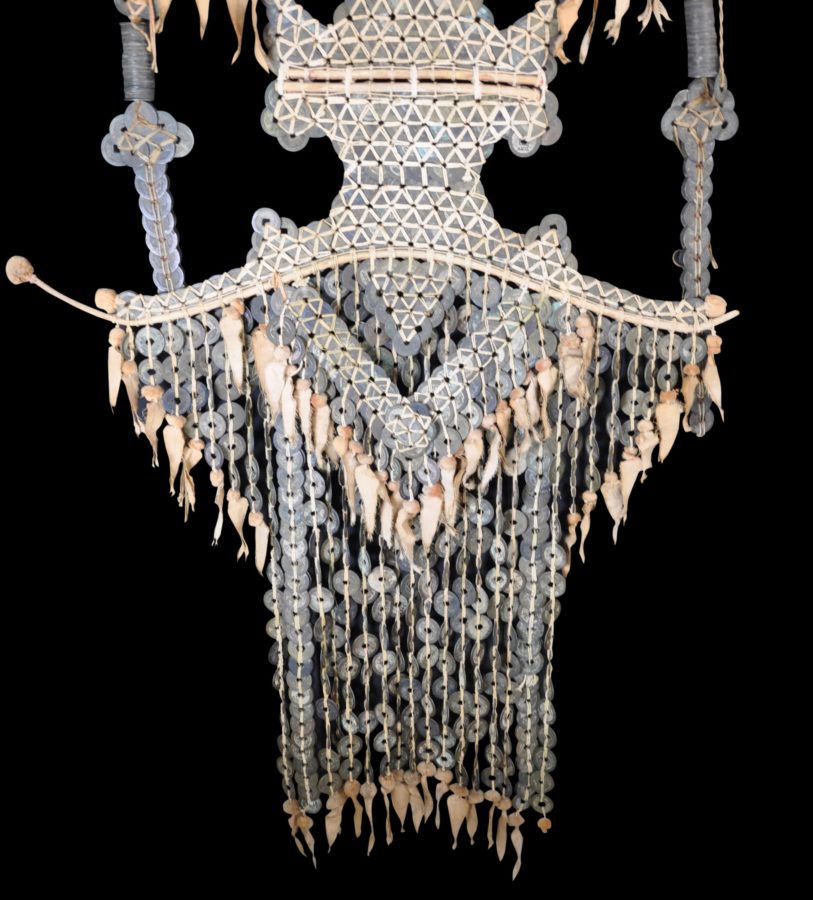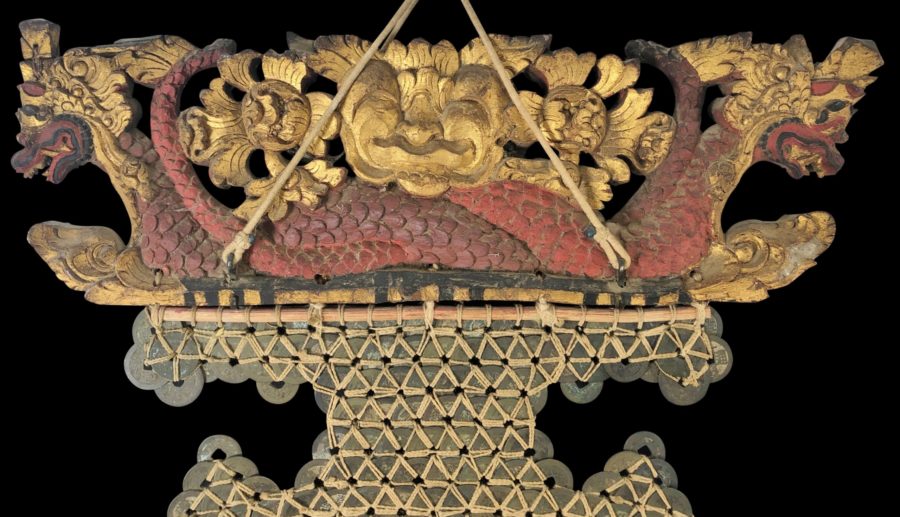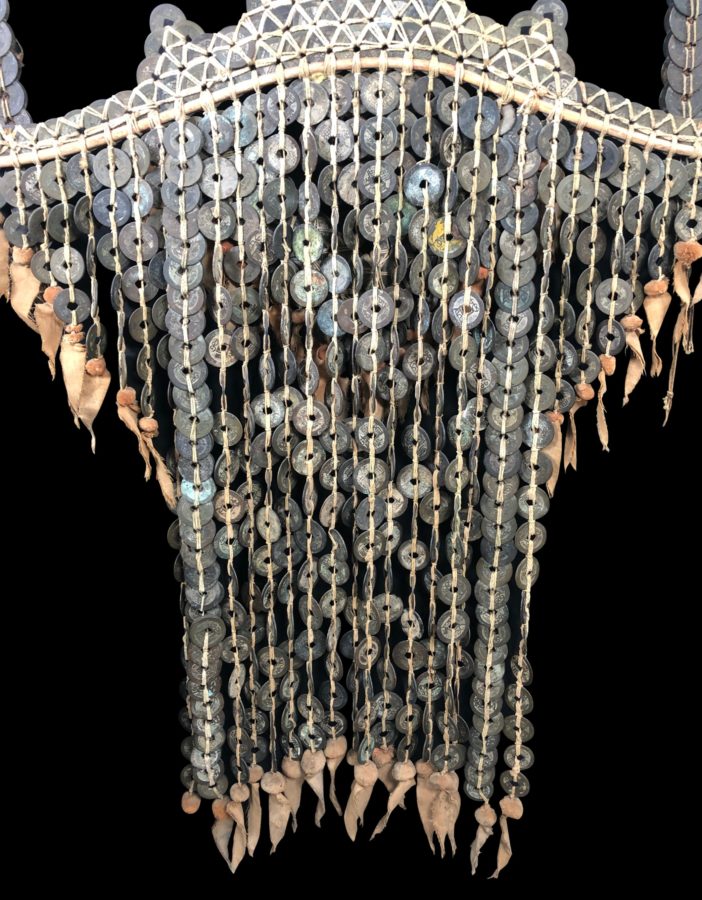This extraordinary Balinese temple hanging is part of a group of hangings known as lamak. Most lamak are made of cut and plaited palm leaves and are meant to be only temporary. A smaller group are designed to be more permanent – perhaps those used by wealthier families for hanging in their temple compounds or even for palace temples.
This example is made from bamboo, small cotton pompoms, cotton textile fragments, and more than one thousand genuine, old Chinese red cash coins. (Traditionally the coins were minted in China with a high copper content, hence their name ‘red’.) The coins were minted in China from the 18th century into the early 20th century.
The use of Chinese coins (which were called kepeng by the Balinese, and also pis bolong – or ‘money with a hole in it’ (Reichle, 2010, p. 151)) saw the Balinese give this type of temple hanging the term kepeng lamak. The presence of so many Chinese coins in Bali provides testament to the commercial ties that the island had with Chinese traders. Additionally, there have been communities of ethnic Chinese living on Bali for centuries.
This is the largest, most elaborate, and probably the oldest kepeng lamak that we have seen published or otherwise. The use of original Chinese coins, its overall size, patina and the fact that it was found in the UK all suggest that it might be as early as the 19th century. Certainly, larger Balinese items do occasionally appear in old UK houses and they probably date to the early 20th century when passenger steamships began to call into Bali and passengers were able to acquire large souvenirs to take with them (the size of the passenger ship permitting such large luggage.)
The lamak here has an overall humanoid or cili form. As such it was possibly intended to represent a deity which might become occupied by that deity during a temple festival. Possibly the deity is intended to represent Dewi Sri, the all-important goddess of rive, prosperity and abundance.
The top of the hanging comprises a carved wooden hanger decorated on both sides as two intertwined naga serpents. It is decorated in Chinese-influenced gold and red.
The kepeng lamak is in excellent condition for its size and age. One bamboo rod is fore-shortened meaning the loss of one pompom. There are few others apparent losses. The use of genuine Chinese coins – particularly in such an extraordinary number – is particularly pleasing. Later examples were made with locally made replicas of Chinese coins as the real item became too expensive to acquire in significant numbers. The item is suspended from two thick cords attached to the wooden hanger at the top.
References
Brinkgreve, F., Lamak: Ritual Objects in Bali, Sidestone Press, 2016.
Meulenbeld, B.C., et al, Budaya Indonesia: Arts and Crafts in Indonesia, Tropenmuseum, 1988.
Ramseyer, U., The Art and Culture of Bali, Oxford University Press, 1977.
Reichle, N. (ed.), Bali: Art, Ritual & Performance, Asian Art Museum, 2010.
Sumner, C. & M. Osborne, Arts of Southeast Asia: From the Powerhouse Museum Collection, Powerhouse Publishing, 2001.


